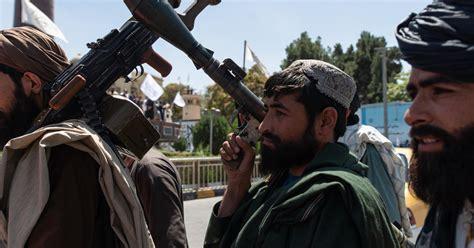
The Taliban vowed to cut ties with al Qaeda, but the terror group appears to be growing in Afghanistan
Al Qaeda has established eight new training camps and maintains several safehouses in Afghanistan, according to a report provided to the United Nations Security Council this week. The report, compiled by the council’s committee created to monitor al Qaeda, indicates that the Taliban has not honored its pledge to the U.S. – outlined in the Doha agreement – to sever ties with the terror group, and that the two organizations remain close.
The Taliban has provided increased protection and support for al Qaeda members since regaining control over Afghanistan in 2021, when U.S. forces pulled out, the report says.
According to the report presented to the Security Council, the group behind the Sept. 11, 2001 terror attacks on the U.S. has established “up to eight new training camps in Afghanistan, including four in Ghazni, Laghman, Parwan and Uruzgan Provinces, with a new base to stockpile weaponry in the Panjshir Valley.”
The terrorist organization also operates five madrasas – religious schools where it trains and indoctrinates children to become fighters – in the east and northeast of Afghanistan, the reports said. It also controls several safehouses in the capital, Kabul, and Herat province, from whereit facilitates the movement of its members and liaisons between its leadership in the country and its top leadership in neighboring Iran, the report says.
The Taliban released a statement denying the report, saying that the United Nations is “always spreading propaganda.”
“There is no one related to al Qaeda in Afghanistan, nor does the Islamic Emirate allow anyone to use the territory of Afghanistan against others,” the statement said.
Al Qaeda’s current leader, Sayf al-Adl is believed to be based in Iran, according to the United Nations and the U.S. Justice Department, which is offering a $10 million reward for information on his exact whereabouts.
Taliban-al Qaeda relations
A year after the Taliban’s takeover of Kabul, the U.S. killed al Qaeda’s then-leader Ayman al-Zawahri with a drone strike in Kabul’s diplomatic district. He was inside a guest house belonging to the Taliban’s Interior Minister, who is also the leader of the powerful Taliban-affiliated Haqqani network, Sirajuddin Haqqani.
“The presence of al Qaeda senior figures in the country has not changed, and the group continues to pose a threat in the region and potentially beyond,” the U.N. report warns. It notes, however, that in its assessment, “the group cannot at present project sophisticated attacks at long range.”
Analysts believe al Qaeda is now a much weaker organization than it used to be, and many doubt the Taliban would allow activities that would jeopardize the U.S. humanitarian support provided to Afghanistan, which remains vital to preventing a humanitarian crisis in the country.
“Are there training camps in Afghanistan? It is entirely possible. But their capacity to hit targets outside the immediate South Asian region is minimal,” veteran regional analyst Torek Farhadi told CBS News. “The Taliban are careful not to let such activities develop, as they are in contact with U.S. authorities.”
“The U.S. is currently the largest humanitarian donor in Afghanistan through the U.N., but ultimately, this support has resulted in avoiding a further humanitarian crisis in the country. The Taliban recognize this precious U.S. support and will not risk upsetting this arrangement,” he said.
On Tuesday, the U.S. Special Inspector General for Afghanistan Reconstruction said the international community had provided at least $2.9 billion in aid to Afghanistan since August 2021, some $2.6 billion of which came from the U.S. government.
Source » cbsnews.com





